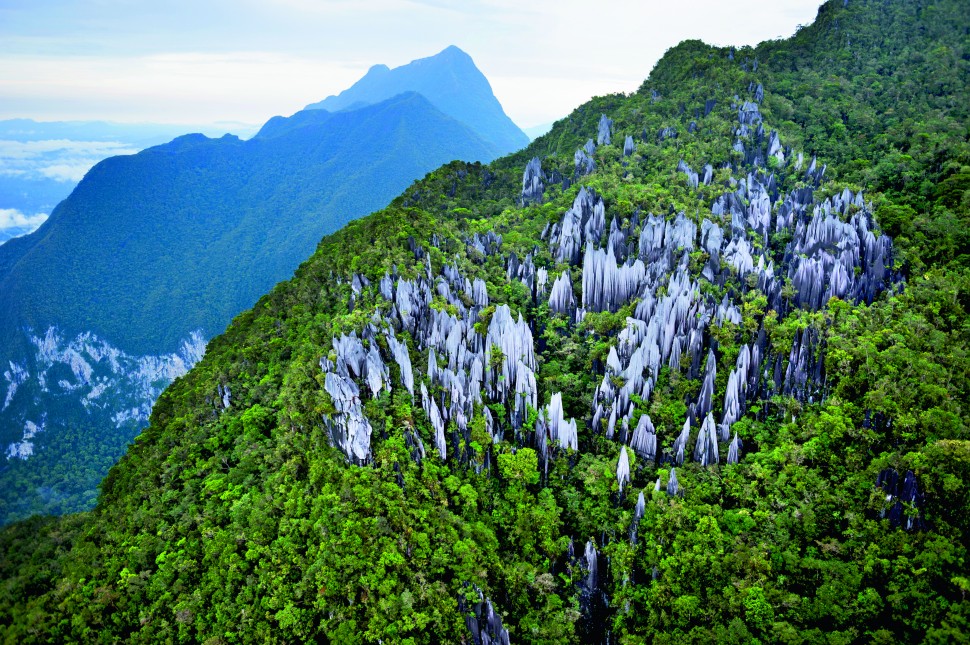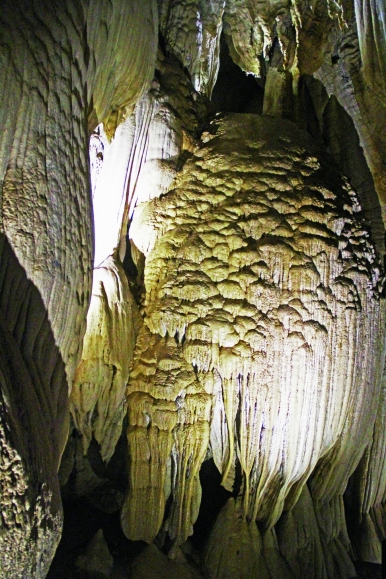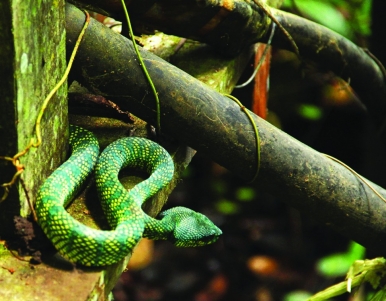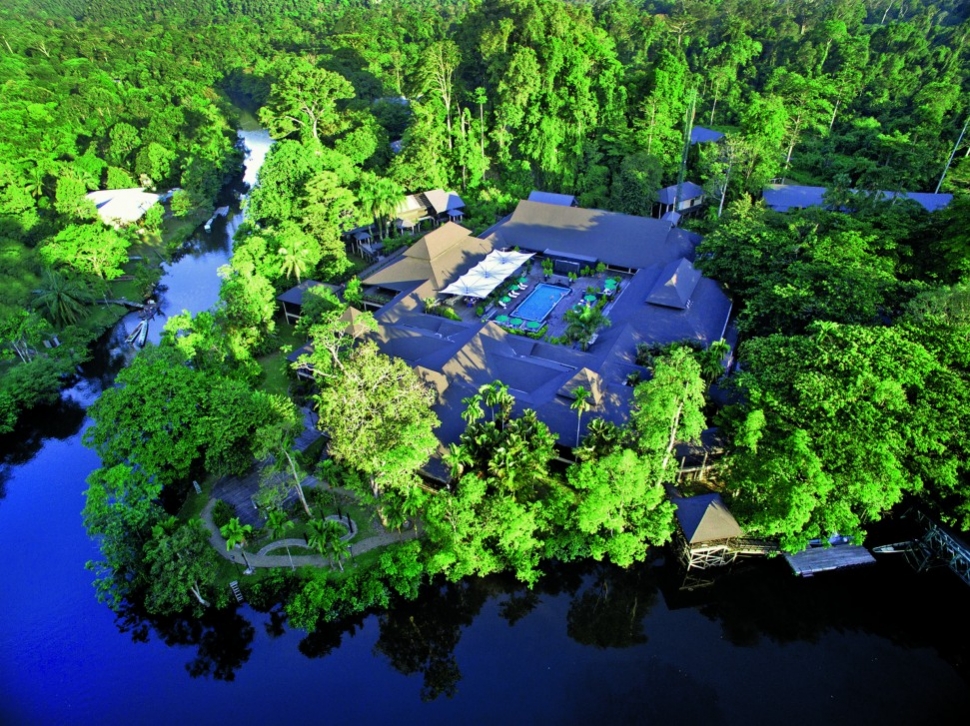Discover striking forests, mountains, the world’s most extensive cave system and more in Sarawak’s Gunung Mulu National Park
Photography David Bowden


I just do not know how anyone could have seen it, but my guides Jenny Malang and Eugene Tony managed to notice a Violin Beetle semi-camouflaged against the forested backdrop. Then, after alerting me to the possible presence of snakes, a Borneoensis Viper appeared almost upon command. Coiled around a post, it was poised to strike unsuspecting prey scurrying past. Eugene explained that while large animals live in the rainforest, our chances of seeing any were remote, so it was the small details we would focus on.
Named after Mount Mulu, the 544-square-kilometre Gunung Mulu National Park in Sarawak is famous for its subterranean limestone caves. The park is one of two UNESCO World Heritage Sites in Malaysian Borneo and is recognised and protected for its astonishing limestone formations, including caves and karst topography.
Three days is the recommended minimum visit, with day one visiting the Deer and Lang Caves, day two visiting the Clearwater and Wind Caves, and day three, climbing up into the rainforest canopy via a 480-metre-long skywalk. Visitors must travel by a small boat to access some of the caves and to visit the Penan communities adjoining the park. Entry fees are charged, and visitors must engage the services of an experienced park guide to visit the caves.
FORESTS, CAVES AND BATS
Before Vietnam’s Hang Son Doong Cave was discovered in 1991, Mulu Caves were considered some of the biggest in the world. Deer Cave was then the largest cave passage in the world and Sarawak Chamber, the largest rock chamber. While size may be important for some, visitors to Mulu do not leave disappointed.
Mulu is a geological wonderland comprising 60 million year old sandstone rocks and limestone caves. Weathering and erosion are continually sculpting the rugged landscape.

There are many caves in the park but only 50 have been explored, with five main accessible caves – Deer, Lang, Clearwater, Wind, and Lagand. Facilities at park headquarters are comprehensive and include accommodation, toilets, lockers, a convenience store, café and a visitor information centre. The interpretation display is interactive and detailed and provides background information on the park’s features.
The three-kilometre-long elevated boardwalk to Deer and Lang Caves weaves its way through lowland mixed dipterocarp forest with pockets of peat swamp forest as well as the unique forest that thrives on limestone rock. Deer Cave is deceptive; the walk up to the entrance gives little away, and then, the gaping chasm unfolds. The cave is home to millions of bats and swiftlets, and the boardwalk, which extends across the cave floor, is a blessing as the ground is in parts a seething mass of insects feverishly feeding on bat droppings or guano.
After exploring Deer and Lang Caves, most visitors adjourn to a viewing platform in the hope that bats (over 30 species in all) will emerge from the caves at dusk. This is an amazing sight and while the bats are small, the sheer number of millions of mostly Wrinkle-lipped Bats flying out of the caves over a few hours has to be seen to be believed. Many of the bats forage over a wide area, including neighbouring Brunei some 60 kilometres away. It is important to keep an eye on the weather as the bats do not emerge when it is raining or when rain is imminent.
RIVERINE CAVES

Clearwater and Wind Caves are accessible via a boat journey along the Melinau River. Named after the cool breeze that flows through it, Wind Cave provides welcome relief from the tropical heat. While a river no longer flows through it, there is abundant evidence that one once did. Its Kings Chamber has some of the park’s most amazing stalagmites and columns.
Visitors can then walk to Clearwater Cave to admire some of the unique vegetation that grows on limestone cliffs between the two caves. Clearwater is another deceptive cave, and while visitors can grasp the enormity of the space, it is hard to imagine that the limestone passage is some 200 kilometres long. Not surprisingly, clear water flows through it, and many visitors take the opportunity to cool off in the river at the cave’s entrance.

PEAKS AND PINNACLES
It is also possible to ascend the peaks of Mount Api (1,750 metres) and Mount Mulu (2,376 metres) but these three-day exercises should only be undertaken by those fit enough for the gruelling challenge and with the aid of an experienced guide. The rigorous climb to Mount Api takes in the famous limestone, Pinnacles. Guided walks across the world’s longest tree-based canopy, suspended 20 metres above the ground and a stream, are offered several times daily.
PARK PEOPLE

Parks are not only established to protect the flora, fauna and landscape but also the people who are dependent on the park. While Mulu is a temporary abode for tens of thousands of visitors who travel here annually, it is also home to the local community that interacts with the park daily.
River-based Orang Ulu (upriver people) of Long Terawan village belong to the Berawan community, while the once-nomadic Penan people live in the Batu Bungan and Long Iman villages. Visitors have access to these villages, and the locals supplement their livelihood by making and selling native handicrafts, showing visitors around their village, and giving them the opportunity to use a blowpipe, their weapon of choice for hunting.
LUXURY IN THE WILDERNESS
Chalet and dormitory accommodation is available in the park, and there are some homestays in the village. However, the finest accommodation is in the 101-room Mulu Marriott Resort and Spa, with five-star facilities to make it an international wilderness retreat. Its rather unique layout is based upon the Sarawakian longhouse with various sections connected by elevated walkways.

The resort is located on the banks of the Melinau River on the boundary with the national park, just a few kilometres from park headquarters. While civilisation appears to be hundreds of kilometres away, the resort has every facility to meet the needs of global travellers. The rooms are luxurious and a most welcome refuge from Mulu’s steamy tropical heat and humidity.
There is little to no development in the park, but tourism infrastructure is permitted in the buffer zone with the Mulu Marriott blending into its forested surroundings. Its pool and spa are especially inviting, while the restaurant overlooks the pool and offers an enticing selection of local and Western dishes.





